Explore Jingdezhen, capital of ceramics
Writer: Tang Li | Editor: Wang Shiyu | From: Original | Updated: 2024-06-03
When Jingdezhen is mentioned, the first thought that emerges is porcelain. As the birthplace of Chinese ceramics, this city in East China’s Jiangxi Province boasts a porcelain-making history of over 2,000 years. With numerous porcelain museums, art galleries, and ancient kiln sites, the city exudes an artistic ambiance with porcelain treasures at every turn.
Beyond the world of ceramics, Jingdezhen is gradually evolving into a new ideal destination. The rich cultural heritage and a slow-paced lifestyle form the essence of Jingdezhen, while the millennia-old city is enveloped by scenic mountains and waters, adding another dimension to its charm.
In the summer, Jingdezhen transforms into a cool retreat. Spend a couple of days in the city crafting pottery with your own hands, purchasing a few porcelain pieces, chatting with local artisans, relishing delicious meals, and unwinding. Here are some of the highlights of Jingdezhen not to be missed.
Imperial Kiln Museum
This museum won the 2021 Architizer A+ Award in the “Culture-Museum” category, a well-deserved recognition of its exquisite design and historical significance. Its exterior boasts an intricate design of varying-sized arched openings, crafted from bricks that cast a mesmerizing pattern when illuminated by the moonlight dancing on the nearby lake. This spectacle transforms the museum into a sight to behold, seemingly floating between water and
sky.
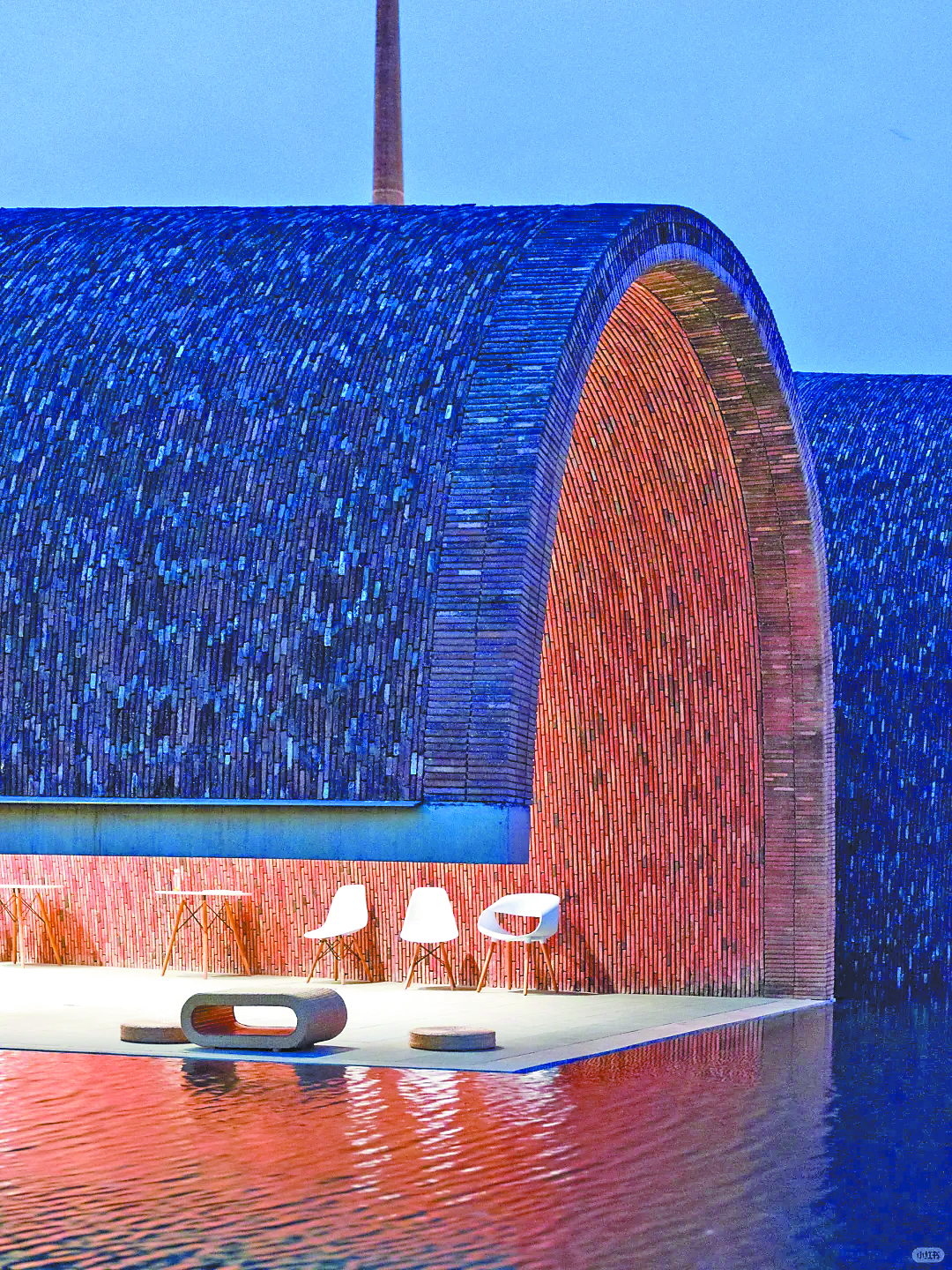
Imperial Kiln Museum. File photos
As the first specialized ceramic museum in China, it offers a journey through millennia of China’s porcelain-making legacy. Occupying nearly 10,000 square meters, it houses nearly 1,500 porcelain works.
The imperial kiln factory located beside the museum stood out as the longest-operating, largest-scale, and most refined official porcelain factory in Chinese history, adding a layer of historical gravitas to the museum’s collection.
While the museum attracts crowds during the day, it also welcomes visitors until late hours. Walking through its exterior gardens in the silence of the night, one could truly immerse themselves in the serenity of an empty museum, a moment of solitude amidst the rich tapestry of history and art.
Dragon Pearl Pavilion
Adjacent to the Imperial Kiln Museum stands the Dragon Pearl Pavilion — a symbol of Jingdezhen’s historical resilience. It was first built during the Tang Dynasty (618-907) and rebuilt in 1990 after several times of destruction.
The six-story pavilion serves as a museum, displaying materials related to the original imperial kilns of the Ming (1368-1644) and Qing (1644-1911) dynasties as well as repaired treasures from the ancient kiln.
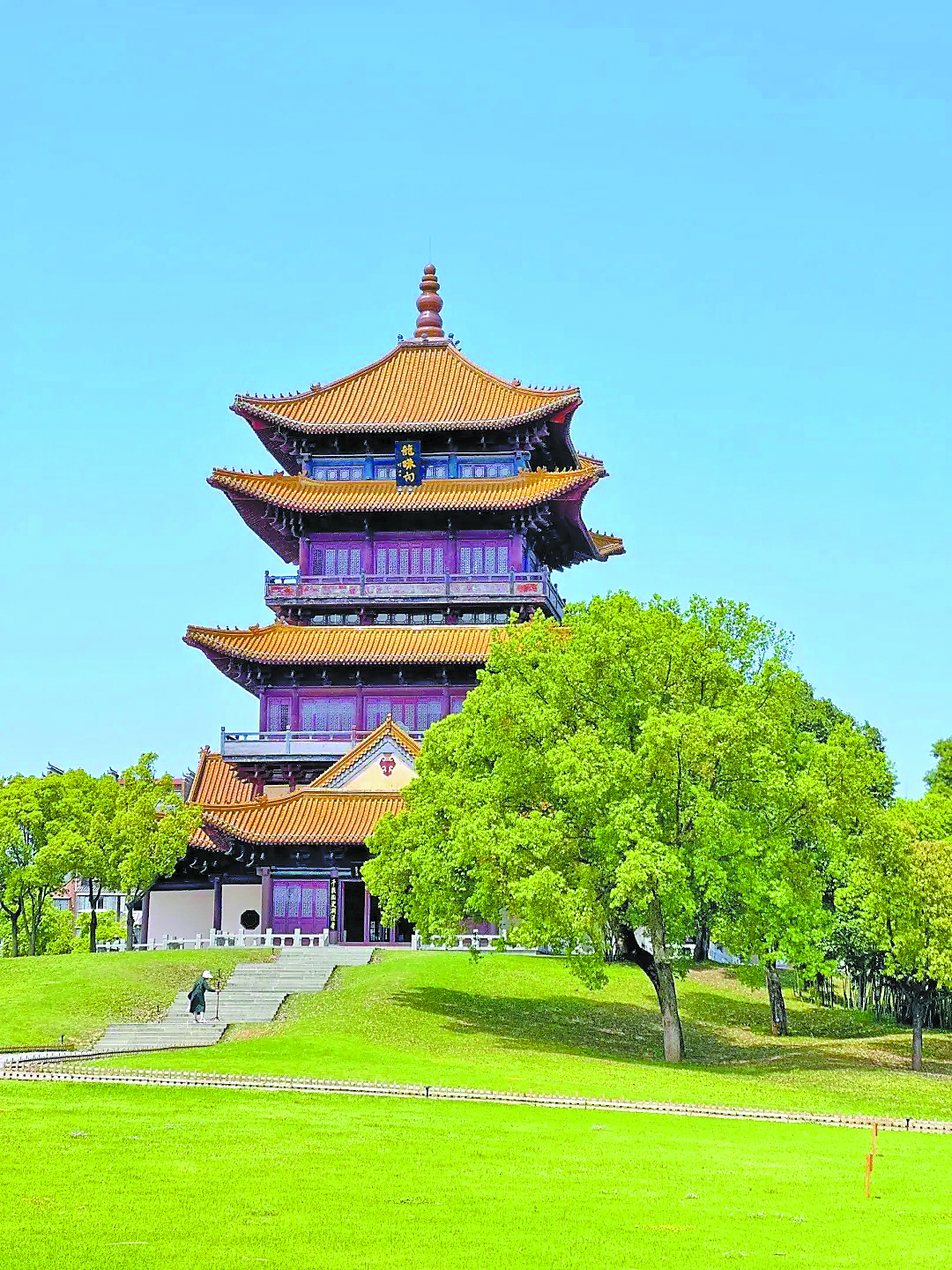
Dragon Pearl Pavilion.
Ancient alleys
When in Jingdezhen, don’t forget to wander through the intricate maze of alleys. Here, you will witness some of the most genuine and unpretentious scenes.
In the old days, locals would construct kilns along the rivers, workshops next to the kilns, and houses alongside the workshops, giving rise to a labyrinth of interconnected lanes and layers of quaint buildings. When you visit this area, three alleyways are the must-explore: Peng Family Alley, Yanghua Alley and Bi Family Lower Alley.
As you stroll through the alleys, you will feel as though you’ve stepped through a corridor of time. The residential buildings from the Ming and Qing dynasties, weathered by years gone by, have acquired a charming antiquity. The stone tiles on the roofs, the moss-covered brick walls, and the sturdy wooden pillars silently narrate the tales of a storied past.
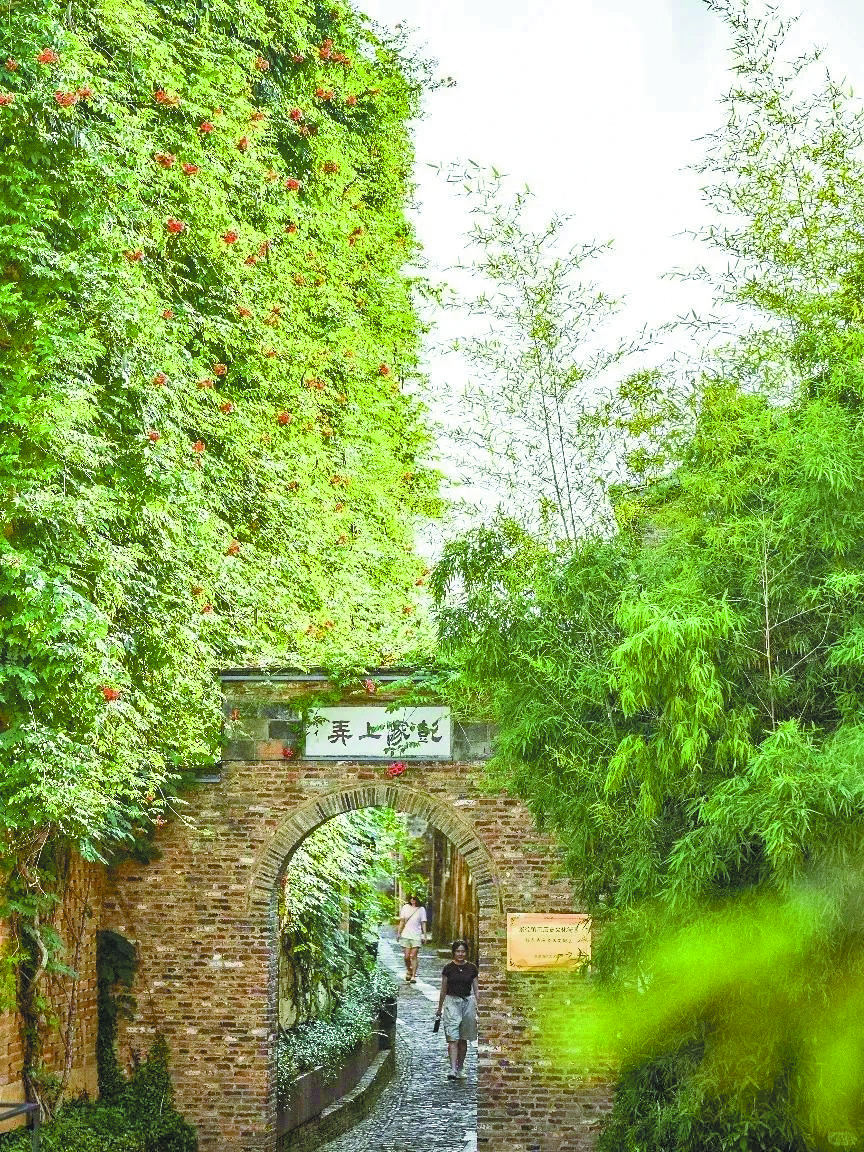
Visitors walk in the Peng Family Alley.
Porcelain Palace in Xinping Village
In the heart of Xinping Village, a 30-minute drive from the city center, lies a vibrant and opulent structure known as the Porcelain Palace. Constructed by an old woman over five years using over 60,000 pieces of porcelain collected throughout her lifetime, this architectural marvel stands as a testament to her passion and dedication.
Granny Yu Ermei, now 94 years old, poured her hard-earned fortune into this grand creation. Every unique ceramic piece within the Porcelain Palace bears witness to her life journey, offering an immersive experience that conveys the strength and spiritual richness inherent in these delicate artifacts.
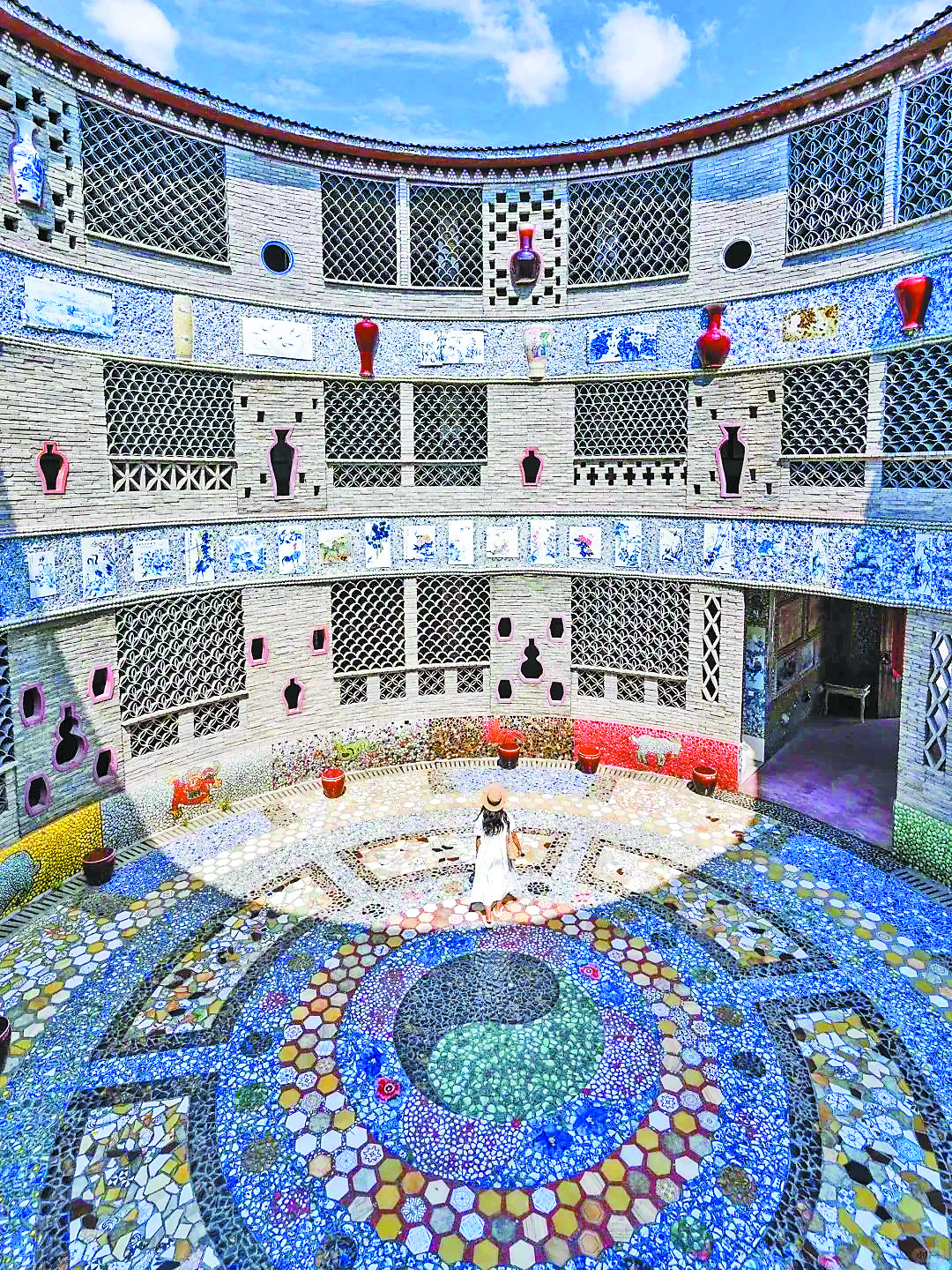
Porcelain Palace in Xinping Village.
Yaoli Ancient Town
Nestled amidst the enchanting landscapes, this town embodies a fusion of natural splendor and cultural heritage.
Here, you can find row upon row of quaint residential buildings, which utilize brick and wood structures, with horse-head walls, small black tiles, varying heights, and a dense layout. Strolling through the town’s streets and alleys feels like traveling through time, back to a distant era.
Besides the architecture, the natural scenery is refreshing. There are crystal-clear streams, lush bamboo forests, and rolling hills. Ancient trees reflected in the crystal-clear river, with elderly villagers peacefully navigating their bamboo rafts along its surface, create a timeless tableau of tranquility.
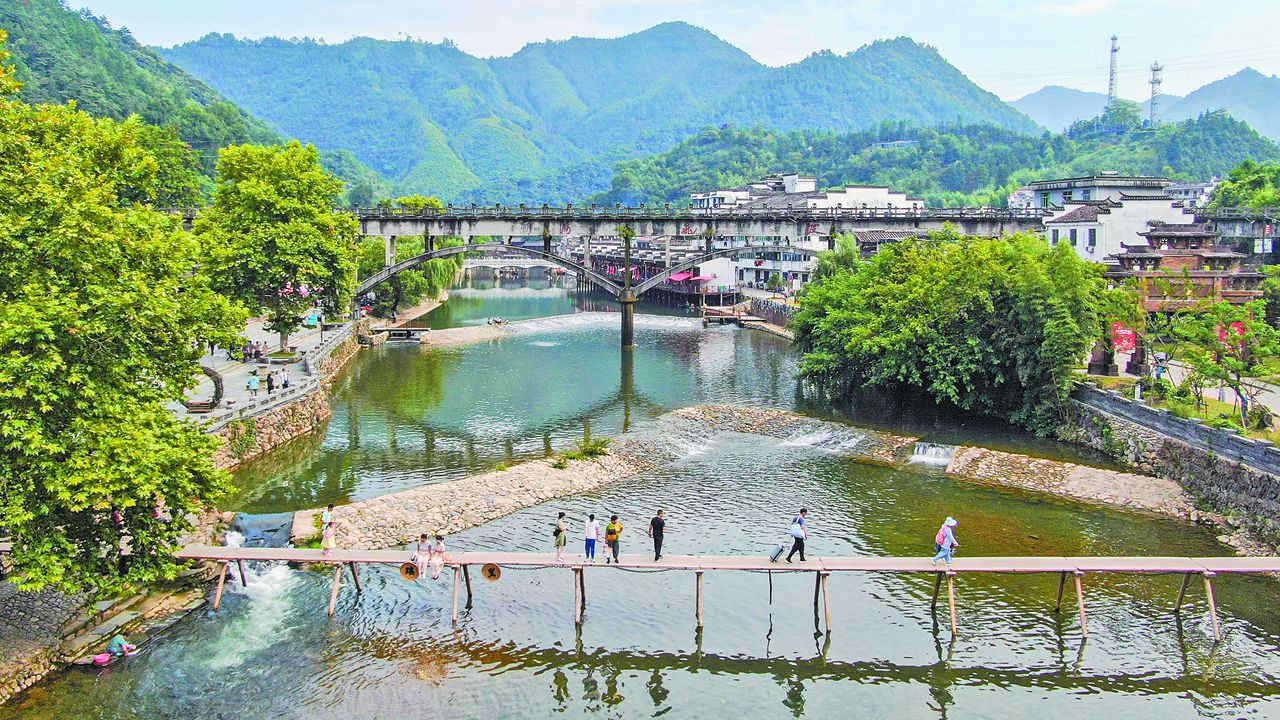
Yaoli Ancient Town.
Hanxi Village
In the picturesque Hanxi Village, landscapes reminiscent of a Studio Ghibli summer come to life among lush tea plantations and pastoral beauty.
Since 2021, a village initiative titled “Art Over Floating Beam” has propelled this millennia-old village into the spotlight, offering a unique blend of artistic immersion and a return to symbiotic living with the land.
Akin to an open-air art gallery, Hanxi Village invites visitors to partake in the joy of tea picking while rekindling the bond between man and nature. Art installations grace its grounds, created by a myriad of artists who find inspiration amidst its serene beauty. Strolling leisurely with a cup of tea in hand becomes a ritual in this idyllic setting.